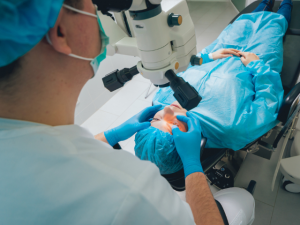PRK
PRK In Iran
Best PRK clinic in Iran
Best PRK hospital in Iran
 More than 40,000 Iranian and foreign patients are going under PRK in Iran each month. PRK in Iran is on top of the middle-east regarding its skilled specialists and surgeons. Here are the best clinics for PRK in Iran:
More than 40,000 Iranian and foreign patients are going under PRK in Iran each month. PRK in Iran is on top of the middle-east regarding its skilled specialists and surgeons. Here are the best clinics for PRK in Iran:
- Noor clinic
- Negah clinic
PRK cost in Iran
There is a significant difference between the cost of PRK in Iran and other countries. The most important factors for the low price of it in Iran are:
- A large number of PRK clinics in Iran.
- A large number of applicants for PRK in Iran
PRK surgery cost in Iran varies depending on the cataract surgery and the hospital. An average cost of PRK surgery in Iran is $500.
PRK cost in Iran in comparison with other countries
This surgery costs $4.000 in the U.S., $1.400 in Europe, $1.000 in Thailand and $800 in Turkey.
Best PRK surgeon in Iran
One of the most important factors for choosing a good surgeon at PRK in Iran is the doctor has done many PRK surgeries.
You can find the best doctors for PRK in Iran on our website by following their experiences.
Why should you travel to Iran for a PRK?
Many patients travel to Iran for PRK. One of the reasons for this matter is Iranian specialists and ophthalmologists who have high surgery success rates.
- Low cost of PRK in Iran
- Low cost of accommodation in Iran
- Well experienced doctors
- The high number of PRK in Iran
Diagnostic and surgical centres accordant with today's European standards are performing the highest quality operations in Iran. Another reason for PRK in Iran is its lower cost compared to other countries.
How long should I stay for PRK in Iran?
About PRK
 PRK (photorefractive keratectomy) is a type of refractive surgery to correct myopia (nearsightedness), hyperopia (farsightedness) and astigmatism.PRK was the first type of laser eye surgery for vision. Though PRK recovery takes a bit longer than recovery from LASIK eye surgery, PRK is still commonly performed and offers advantages over LASIK for some patients. Like LASIK and other types of laser eye surgery, PRK works by reshaping the cornea, allowing light entering the eye to be correctly focused onto the retina for clear vision. It helps people to have an even more beautiful, shiny face by getting rid of all kinds of glasses and its side effects on the face.
PRK (photorefractive keratectomy) is a type of refractive surgery to correct myopia (nearsightedness), hyperopia (farsightedness) and astigmatism.PRK was the first type of laser eye surgery for vision. Though PRK recovery takes a bit longer than recovery from LASIK eye surgery, PRK is still commonly performed and offers advantages over LASIK for some patients. Like LASIK and other types of laser eye surgery, PRK works by reshaping the cornea, allowing light entering the eye to be correctly focused onto the retina for clear vision. It helps people to have an even more beautiful, shiny face by getting rid of all kinds of glasses and its side effects on the face.
Recommended for
- Patients with up to -11.00 diopters of nearsightedness, up to +5.00 of farsightedness and up to 5.00 of astigmatism.
- Patients who are looking to get rid of the continual cost and side effects involved in glasses and contact lens use.
- Athletes who require the freedom offered by refractive surgery.
Before PRK
Before PRK eye surgery, the patient will meet with an eye doctor to go through medical history taking and eyes will be fully examined; Likely initial tests include measuring corneal thickness, refraction, corneal mapping, eye pressure, and pupil dilation will be done.
During PRK
 First, the eye surgeon removes a central area of corneal epithelium with an alcohol solution. Next, an excimer laser is used to precisely reshape the curvature of cornea’s surface. A soft contact lens “bandage” is then placed on the cornea to help protect the eye. New epithelial cells grow back in about four or five days, after which the eye doctor removes the bandage contact lens.
First, the eye surgeon removes a central area of corneal epithelium with an alcohol solution. Next, an excimer laser is used to precisely reshape the curvature of cornea’s surface. A soft contact lens “bandage” is then placed on the cornea to help protect the eye. New epithelial cells grow back in about four or five days, after which the eye doctor removes the bandage contact lens.
Recovery
Most of the time, the doctor will apply a bandage contact lens after surgery. Patients will wear it for the first 5 to 7 days to let the surface of the eye to heal. Patients will have to see an eye doctor with their medical records at least a few times during the next six months. The first visit is usually one day after surgery; the second visit, in which the doctor will remove the contact lens, happens about a week later.
